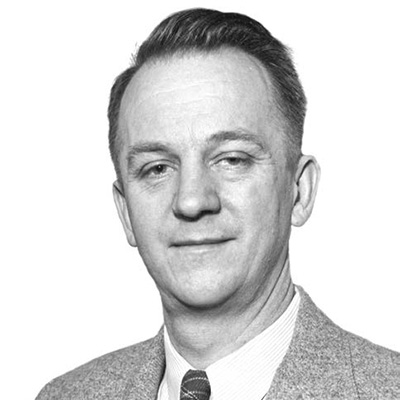Bio
BioMerle Tuve was the first director of APL. Serving from 1942 to 1946, he played a pivotal role in shaping the Laboratory’s mission and success.
Before his appointment as APL’s first director, Tuve was a physicist at the Carnegie Institution of Washington’s Department of Terrestrial Magnetism (DTM). When Carnegie’s president set up the National Defense Research Committee, Tuve joined the effort to create new defense technologies and stood up Section T (T for Tuve). Later, Johns Hopkins was asked to sponsor the Carnegie effort with Tuve at the helm, and on March 10, 1942, APL was born.
As the director of APL, Tuve led the development of the radar proximity fuze (known as the VT fuze) that dramatically increased the effectiveness of shipboard air defenses in the Pacific, played a key role in the Battle of the Bulge in Europe and was later judged by historians to be one of the three most important developments of the war—after radar and the atomic bomb.
In addition to the VT fuze, Tuve’s team at APL developed the MK 57, a new anti-aircraft gun director that greatly increased ship safety. Tuve also led the Bumblebee task, challenging his staff to design and develop ramjet propulsion and missile control and guidance at subsonic and eventually supersonic speeds. This work would soon make guided missiles possible.
Tuve was a results-driven leader who held his team members to high standards. Under Tuve’s leadership, APL’s staff grew from 100 to 800 people, and the Lab’s international reputation as an institution that could do the impossible was established.
After leaving APL, Tuve returned to Carnegie Institution of Washington’s DTM as its director. Before he left, he had the foresight to provide funding to help retain the brilliant scientists and engineers of the fuze era who were conducting fundamental research in theoretical physics. This group would grow and later become APL’s Research Center.
Tuve earned degrees in electrical engineering and physics from the University of Minnesota and a doctorate in physics from Johns Hopkins University.
